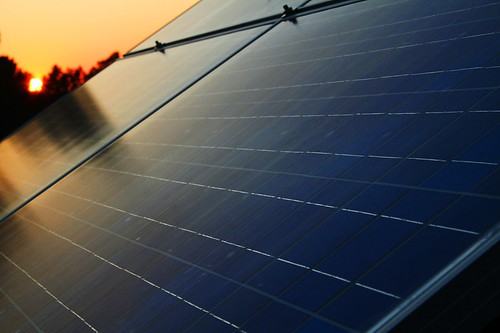Earlier this week Ed Miliband, the UK’s Secretary of State for Energy and Climate Change launched The UK Low Carbon Transition Plan.
The plan is comprehensive and lays out several targets for the year 2020:
- * More than 1.2 million people will be in green jobs
- * more than 1.5 million households will be supported to produce their own clean energy
- * Around 40% of electricity will be from low carbon sources, from renewables, nuclear and coal (with CCS)
- * We will be importing 20-30% less gas than we otherwise would
- * The average new car will emit 40% less carbon than now.
The announcement is a world first because emissions reductions targets from each sector of the UK economy are quantified and policies to achieve them are laid out. More significantly, the budgets are legally binding making the UK the first country in the world to write its carbon targets into law.
The launch was live covered by Twitter members (esp @GuardianECO and @JamieAndrews) posting using the hashtag #UKCPaper
Highlights from the Twitter posts include:
New funding for elec cars, recharging stations in up to six cities
Why only six cities? Surely this is something which should be rolled out nationwide as a single project. With vehicle to grid technologies this would even help the UK government increase the level of renewables on the grid helping meet the 40% low carbon emissions target (with less coal!).
40% of power from low carbon energy by 2020, more in the future
As mentioned above, this target will be met by a combination of renewables, nuclear and coal (with CCS). The inclusion of both nuclear and coal in this figure is bad news. Coal is dirty for all kinds of reasons (coal fly ash slurry spill anyone? Coal ash contains arsenic, copper, barium, cadmium, chromium, lead, mercury, nickel, and thallium!) and the problems associated with storage of nuclear waste are well known.
Smart elec meters for 26 million homes by 2020. House by house, street by street transformation
Nice, but as @JamieAndrews pointed out, this just means that the timeframe has just grown longer!
It is not all negative though.
From next April, people can generate own power and feed back in to the grid for cash
£60mil for wave technology, up to £120mil for offshore wind, to support 100,000s jobs
and
Compulsory support from energy companies for vulnerable consumers
are all superb announcements and will help the government reach its targets.
The full announcement is available for download but be warned it is a 228 page pdf behemoth!
In conclusion, this is a hugely important piece of legislation setting out for the first time anywhere legally binding CO2 emissions targets for all sectors of the UK. The policies to achieve them as laid out may not all be perfect (and in the case of continuing to use coal, very far from perfect) but these are just that, policies – they will change at the whim of whoever is in power at any time. The coal and nuclear lobbies are extremely well funded and have managed to inveigle their way into this document at policy level but their days are numbered.
The legally binding CO2 emissions targets will be far harder to change.
Related articles by Zemanta
- Society must change to tackle global warming says Ed Miliband (telegraph.co.uk)
- News Commentary By Mathew Hulbert-Climate Change (netnewsdaily.com)
- Miliband unveils low-carbon strategy (guardian.co.uk)
- UK energy secretary to launch major renewables expansion to cut emissions (guardian.co.uk)
- Miliband takes the greener path (guardian.co.uk)


